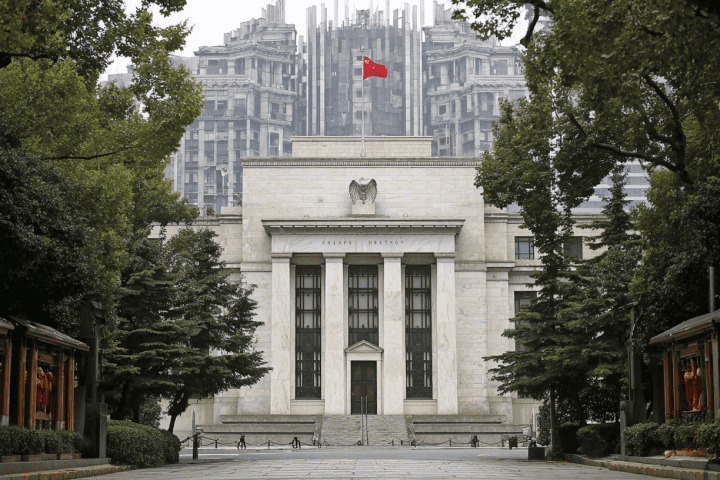Global food security represents one of humanity’s most fundamental challenges, yet recent disruptive events have exposed the alarming fragility of our interconnected food systems. From the COVID-19 pandemic to the war in Ukraine, extreme weather events, and supply chain disruptions, the past few years have demonstrated how quickly food security can deteriorate when systems face unexpected shocks. Understanding this fragility of food systems is crucial for building resilience against future disruptive events that threaten to leave millions hungry in an increasingly unstable world.
The concept of global food security extends far beyond simply producing enough food. It encompasses availability, accessibility, utilization, and stability—all of which can be compromised when disruptive events strain the complex networks that feed over 8 billion people worldwide. As climate change accelerates and geopolitical tensions rise, recognizing and addressing the fragility of food systems has become an urgent priority for governments, organizations, and communities globally.
The Complex Architecture of Global Food Systems
Global food security relies on an intricate web of interconnected systems spanning production, processing, distribution, and consumption. This complexity, while enabling efficiency and abundance in normal times, creates multiple points of vulnerability when disruptive events occur.
Production Concentration and Geographic Risks
Modern agriculture has evolved toward specialization and geographic concentration, with specific regions dominating the production of key crops. Ukraine and Russia together account for nearly 30% of global wheat exports, while a handful of countries control the majority of rice, corn, and soy production. This concentration creates fragility in food systems because disruptive events in these key regions can immediately affect global markets.
When conflict erupted in Ukraine in 2022, global grain prices spiked dramatically, demonstrating how food security depends on geopolitically stable production regions. The fragility of food systems becomes apparent when major producers face wars, extreme weather, or other disruptive events that halt production or prevent exports.
Supply Chain Dependencies and Chokepoints
Global food security depends on complex supply chains that move food from production areas to consumption centers worldwide. These networks rely on critical infrastructure including ports, transportation systems, processing facilities, and storage infrastructure. Disruptive events targeting these chokepoints can rapidly compromise food security even when production remains adequate.
The Ever Given container ship blocking the Suez Canal in 2021 provided a stark reminder of how transportation disruptions can affect global food distribution. Similarly, processing plant closures during COVID-19 created meat shortages despite adequate livestock populations, highlighting the fragility of food systems when key infrastructure fails.
Input Dependencies and Industrial Agriculture
Modern agriculture’s reliance on external inputs—fertilizers, pesticides, seeds, and fuel—creates additional vulnerabilities in global food security. Many countries depend on imports for these critical inputs, and disruptive events affecting input suppliers can cascade through food systems months or seasons later.
Russia’s dominance in fertilizer exports meant that sanctions and export restrictions following its invasion of Ukraine threatened food security globally by making fertilizers expensive or unavailable. This demonstrates how the fragility of food systems extends beyond immediate food production to include the industrial inputs that enable modern agriculture.
Types of Disruptive Events Threatening Food Security
Climate-Related Disruptions
Climate change represents perhaps the greatest long-term threat to global food security, with disruptive events becoming more frequent and severe. Extreme weather events including droughts, floods, hurricanes, and heat waves can devastate crops and livestock, creating immediate shortages and long-term fragility in food systems.
The 2021 heat dome in the Pacific Northwest destroyed crops and killed livestock, while unprecedented flooding in Pakistan submerged one-third of the country, affecting millions of people and destroying vast agricultural areas. These climate disruptive events demonstrate how weather extremes can overwhelm even resilient agricultural systems.
Rising sea levels threaten coastal agricultural areas, while changing precipitation patterns force farmers to adapt or relocate. The fragility of food systems becomes evident as traditional growing regions become unsuitable for agriculture, forcing production to shift to new areas that may lack necessary infrastructure.
Geopolitical and Economic Shocks
Wars, trade disputes, and economic crises represent major disruptive events that can rapidly undermine global food security. Military conflicts not only disrupt production in affected regions but also create refugee crises that strain food resources in neighboring areas.
The ongoing conflict in Ukraine exemplifies how war creates cascading effects on food security. Beyond destroying Ukrainian agricultural capacity, the war disrupted global grain markets, increased energy and fertilizer costs, and created food price inflation that particularly affected vulnerable populations worldwide.
Trade wars and sanctions can similarly disrupt global food security by blocking normal commercial flows. When countries restrict food exports during crises—as many did during the early COVID-19 pandemic—the fragility of food systems becomes apparent as import-dependent regions face immediate shortages.
Biological and Health Emergencies
Pandemics, plant diseases, and animal health crises represent disruptive events that can rapidly compromise food security through multiple pathways. COVID-19 demonstrated how health emergencies affect every aspect of food systems, from production and processing to distribution and access.
Labor shortages during COVID-19 disrupted harvesting, processing, and distribution, while restaurant closures and changed consumption patterns created surpluses in some areas and shortages in others. Border restrictions prevented seasonal workers from reaching farms, highlighting the fragility of food systems dependent on migrant labor.
Plant and animal diseases can devastate specific crops or livestock populations. African Swine Fever has killed millions of pigs globally, while various plant diseases continue threatening staple crops. These biological disruptive events demonstrate how quickly food security can be compromised when pathogens spread through agricultural systems.
Vulnerable Populations and Regions
Small Island Developing States
Small island nations face particular vulnerability to disruptive events affecting food security. These countries typically import most of their food, making them extremely vulnerable to supply chain disruptions, price shocks, and transportation problems.
Climate change poses existential threats to many island nations through sea level rise, saltwater intrusion, and increased storm intensity. The fragility of food systems in these regions is compounded by limited land for agriculture and dependence on external food sources that can be disrupted by disruptive events.
Conflict-Affected Regions
Areas experiencing or recovering from conflict face severe challenges to food security that extend far beyond immediate military action. Disruptive events in conflict zones destroy agricultural infrastructure, displace farming populations, and interrupt normal economic activities that support food access.
Syria, Yemen, and parts of Africa demonstrate how conflict creates long-term fragility in food systems that persists even after active fighting ends. Rebuilding agricultural capacity and food distribution networks requires years or decades, leaving populations vulnerable to additional disruptive events.
Urban Poor and Marginalized Communities
Urban populations, particularly the poor, face unique vulnerabilities to disruptive events affecting food security. These communities typically lack access to agricultural land and depend entirely on market systems for food access, making them vulnerable to price shocks and distribution disruptions.
The fragility of food systems becomes apparent in urban areas when disruptive events interrupt supply chains or increase food prices beyond what poor families can afford. COVID-19 lockdowns demonstrated how quickly urban food access could deteriorate when economic disruptions prevented people from purchasing food despite adequate supplies.
Economic Dimensions of Food System Fragility
Price Volatility and Market Speculation
Global food security faces threats from financial markets that can amplify the impacts of disruptive events through speculation and price volatility. When commodity traders anticipate shortages, speculative buying can drive prices far above levels justified by actual supply and demand fundamentals.
The 2008 food crisis demonstrated how financial speculation could create food security emergencies even without significant production shortfalls. This financialization of food markets creates additional fragility in food systems by disconnecting prices from physical realities and making food unaffordable for vulnerable populations.
Debt and Economic Vulnerability
Many developing countries face growing debt burdens that limit their ability to respond to disruptive events affecting food security. When countries must service large debts, they have fewer resources available for food imports, emergency reserves, or agricultural investments.
Rising interest rates and currency devaluations can make food imports prohibitively expensive, creating food security crises even when global supplies remain adequate. This economic fragility of food systems particularly affects countries that liberalized their agricultural sectors and became dependent on imports.
Trade Dependencies and Export Restrictions
Countries that rely heavily on food imports face particular vulnerability when disruptive events prompt exporting countries to restrict trade. During crises, many countries prioritize domestic food security over export commitments, creating shortages in import-dependent regions.
The fragility of food systems becomes evident when free trade assumptions break down during emergencies. Countries with limited agricultural capacity cannot quickly substitute domestic production for interrupted imports, creating immediate food security threats.
Technological Solutions and Innovations
Precision Agriculture and Climate Adaptation
Advanced agricultural technologies offer possibilities for reducing the fragility of food systems by increasing productivity and climate resilience. Precision agriculture, drought-resistant crops, and improved soil management can help maintain production despite disruptive events.
Genetic engineering and traditional breeding programs are developing crops that can withstand extreme weather, resist diseases, and require fewer inputs. These innovations could strengthen global food security by reducing vulnerability to specific disruptive events that historically devastated particular crops.
Alternative Protein Sources and Urban Agriculture
Innovations in alternative protein production, including plant-based meats, insect farming, and cellular agriculture, could reduce pressure on traditional livestock systems vulnerable to disruptive events. These technologies offer possibilities for more resilient protein production that requires fewer resources and generates lower emissions.
Urban agriculture and vertical farming can bring food production closer to consumption centers, reducing dependence on long supply chains vulnerable to disruption. While these technologies cannot replace traditional agriculture entirely, they can contribute to more resilient food security by diversifying production systems.
Digital Technologies and Supply Chain Management
Digital technologies including blockchain, artificial intelligence, and satellite monitoring can improve food security by providing better information about production, storage, and distribution. These tools can help predict and respond to disruptive events before they create widespread shortages.
Early warning systems using satellite data and weather monitoring can help anticipate crop failures and trigger emergency responses. Supply chain transparency technologies can help identify vulnerabilities and develop alternative distribution routes when disruptive events interrupt normal flows.
Building Resilience Against Future Disruptions
Diversification and Redundancy
Reducing the fragility of food systems requires deliberate diversification of production, processing, and distribution capacity. This includes geographic diversification of crop production, development of multiple processing facilities, and creation of redundant transportation routes.
Strategic food reserves and emergency stockpiles can provide buffers against disruptive events, though these require significant investments and careful management. Regional cooperation can help countries pool resources and share risks, creating more resilient food security networks.
Local and Regional Food Systems
Strengthening local and regional food systems can reduce dependence on global supply chains vulnerable to disruptive events. While global trade remains important for food security, local production can provide essential backup when international systems fail.
Supporting smallholder farmers, local processing capacity, and regional distribution networks creates multiple pathways for food access that can continue functioning when disruptive events interrupt global systems. This approach requires balancing efficiency with resilience.
Policy and Governance Reforms
Addressing the fragility of food systems requires coordinated policy responses at local, national, and international levels. This includes reforming trade policies that exacerbate vulnerability, investing in rural infrastructure, and creating social safety nets that protect vulnerable populations during crises.
International cooperation mechanisms need strengthening to prevent countries from imposing export restrictions during emergencies and to coordinate responses to disruptive events affecting global food security. Early warning systems and emergency response protocols can help minimize the impact of predictable disruptions.
Conclusion
The fragility of food systems revealed by recent disruptive events demands urgent attention and coordinated action. While global food production has increased dramatically over recent decades, the concentration, complexity, and interdependence of modern food systems create vulnerabilities that can rapidly compromise food security for millions of people.
Understanding this fragility is the first step toward building more resilient food systems capable of withstanding future disruptive events. This requires balanced approaches that maintain the benefits of global integration while building redundancy, diversification, and local capacity that can function when global systems fail.
The challenge of strengthening global food security against disruptive events requires unprecedented cooperation between governments, businesses, and communities. Success will depend on recognizing that food security is not just an agricultural issue but a complex challenge requiring integrated solutions across multiple sectors and scales.
As climate change intensifies and geopolitical tensions persist, the fragility of food systems will likely increase. Preparing for this reality requires immediate action to build resilience, reduce vulnerabilities, and ensure that global food security can withstand the disruptive events that lie ahead.












